#northern and southern dynasties
Text
[Hanfu · 漢服]Chinese Northern and Southern dynasties(420-589 AD) Hanfu Photoshoots
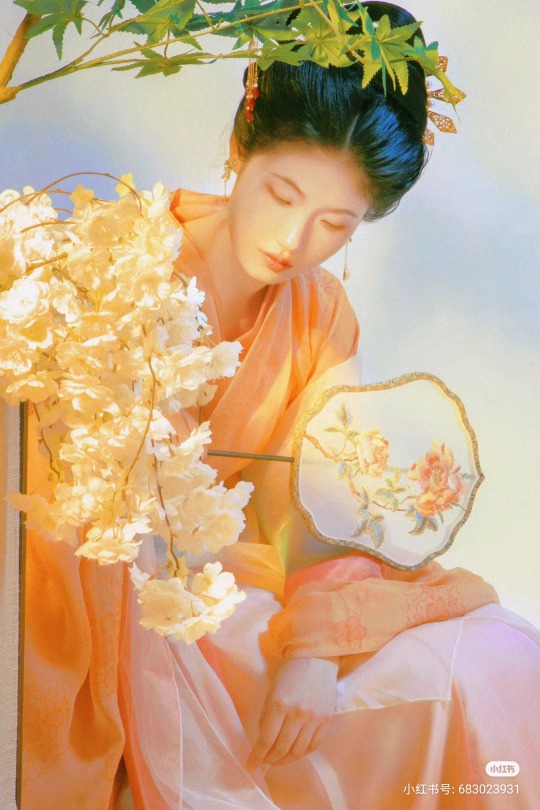
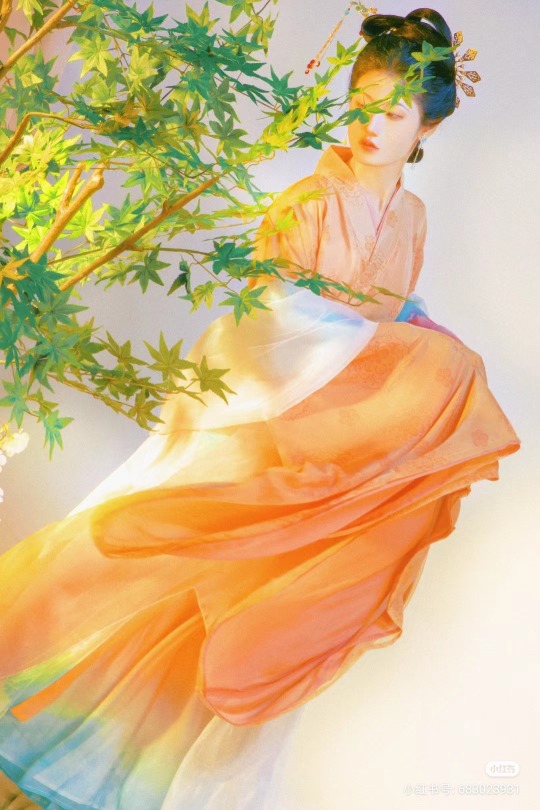
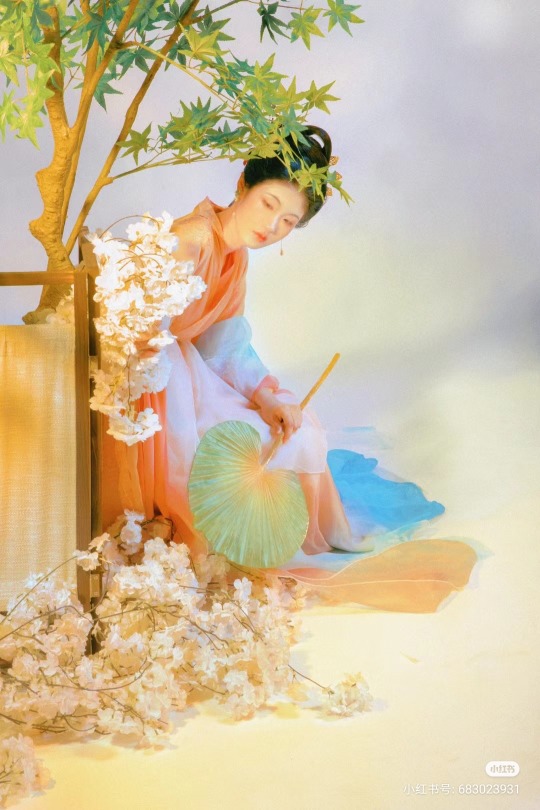

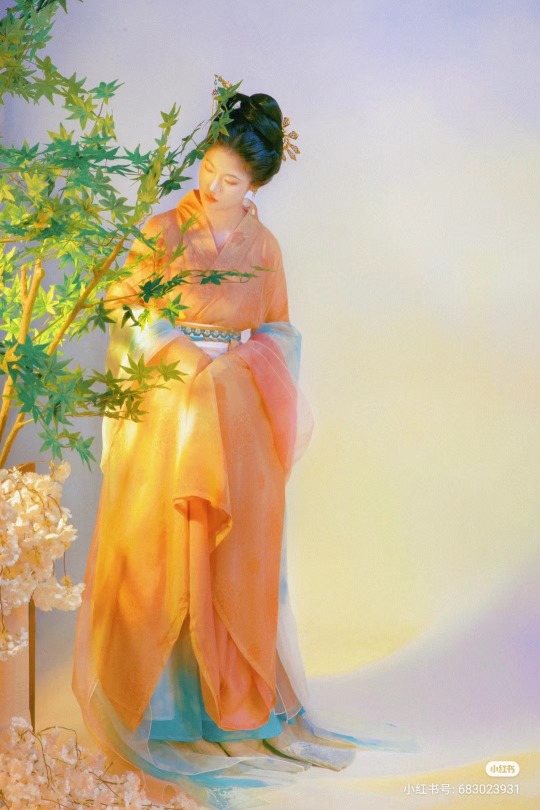
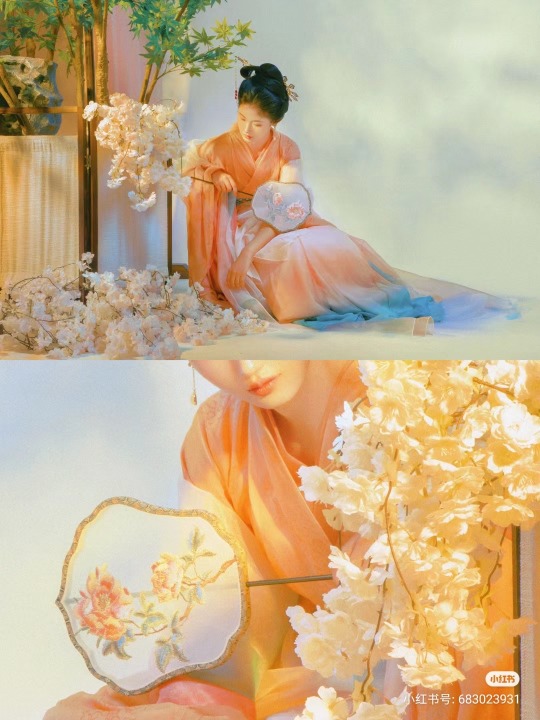
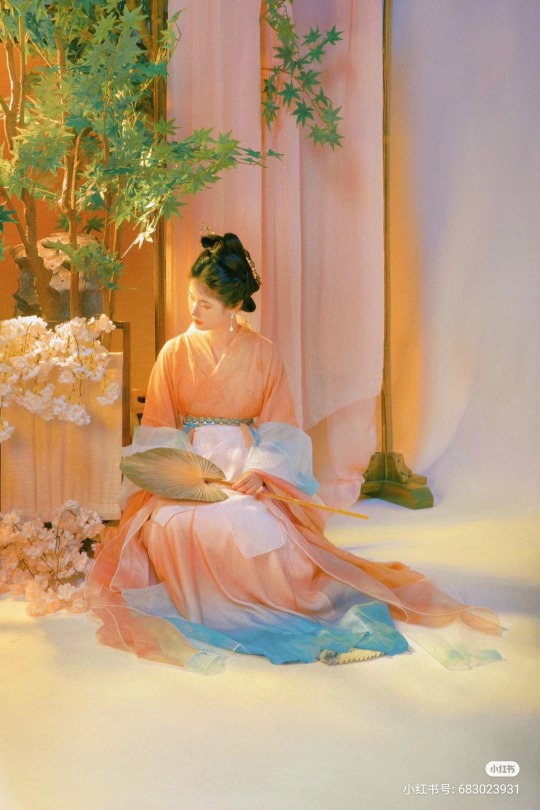
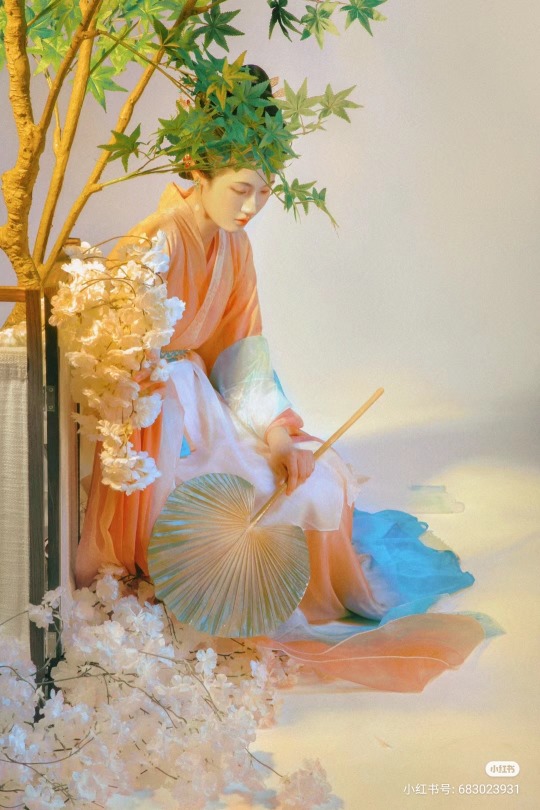
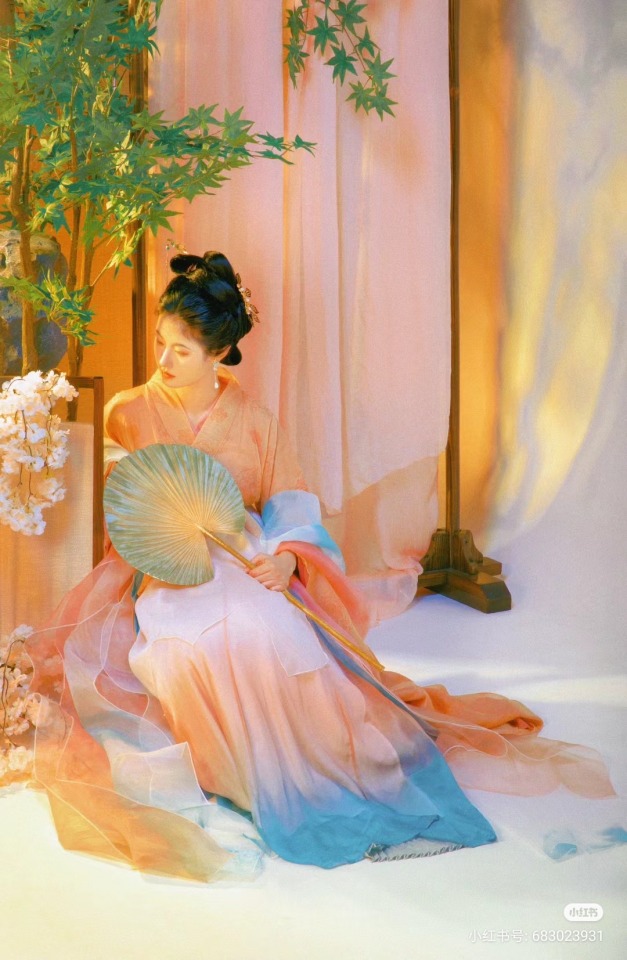

————————
📸Photo:朱山尽_
💄 Makeup:@南夕叙
👗Hanfu: @十九觅原创设计汉服
🔗Xiaohongshu App: http://xhslink.com/ZmAX6w
————————
#chinese hanfu#northern and southern dynasties#hanfu#hanfu accessories#hanfu_challenge#chinese traditional clothing#china#hanfu photoshoot#chinese#chinese aesthetics#中華風#汉服#漢服#朱山尽
152 notes
·
View notes
Text
Ugh. Why is it so difficult to find info on men's clothing? 90% of the websites I visit are about women's clothing only. Sometimes with a very small paragraph or two on men's clothing. Ugh. Whyyyyyyy.
#hanfu#chinese history#historical fashion#chinese fashion#sui dynasty#tang dynasty#northern and southern dynasties#wei and jin dynasties#history of hanfu
14 notes
·
View notes
Photo

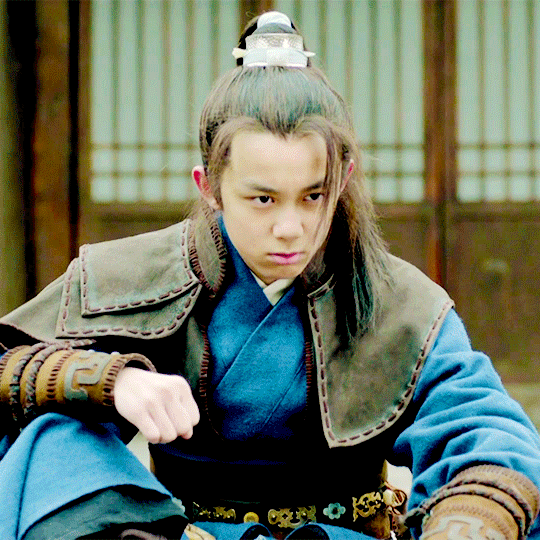
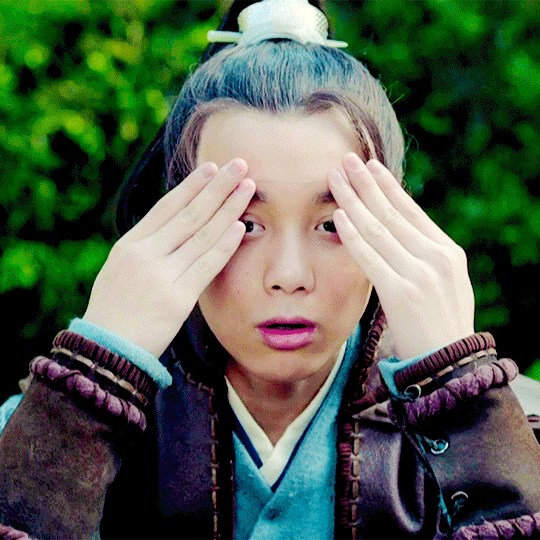
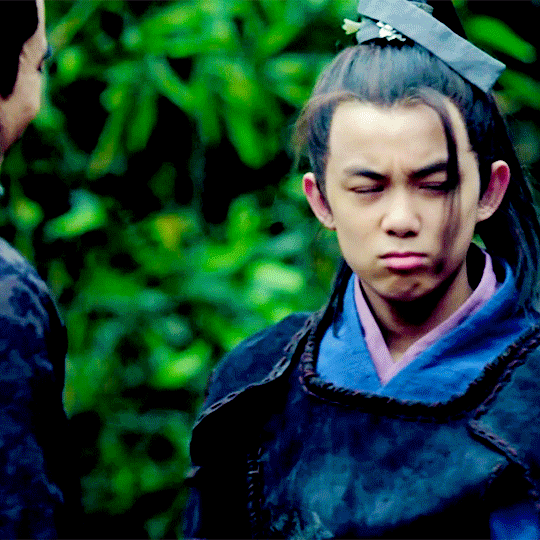
nirvana in fire + fei liu
#nirvana in fire#perioddramaedit#cdrama#cdramanet#gifshistorical#cdramaedit#琅琊榜#gzh#northern and southern dynasties#cdramagifs#asiandramanet#perioddramasource#onlyperioddramas#chinese drama
227 notes
·
View notes
Text
life update: i’m watching thousand autumns because im a geek who’s into the novel’s historical background
4 notes
·
View notes
Text
Imperial Chinese Harem Systems part 3
Western Han
Empress (皇后 ; huáng hòu)
Lady of Bright Deportment (昭儀; zhāo yí)
Lady of Handsome Fairness (婕妤; jié yú), created by Emperor Wu
Lady of Graceful Beauty (娙娥; xíng é), created by Emperor Wu
Lady of Lovely Countenance (容華; róng huá), created by Emperor Wu
Lady of Complete Deportment (充衣; chōng yī), created by Emperor Wu
Beauty (美人; měi rén)
Virtuous Lady (良人; liáng rén)
Consort (八子; bā zi)
Lady (七子; qī zi)
Senior Palace Woman (長使; zhǎng shǐ)
Junior Palace Woman (少使; shǎo shǐ)
Lady for Miscellaneous Uses (五官; wǔ guān)
Lady of Complaisant Constancy (順常; shùn cháng)
Lady Without Impurity (舞涓; wǔ juān), Lady of Reverent Gentleness (共和; gòng hé), Lady who Pleases the Spirit (娛靈; yú líng), Lady who Could Comfort a Multitude (保林; bǎo lín), Lady of Excellent Employment (良使; liáng shǐ), Lady for Night Attendance (夜者; yè zhě)
The principal wife of the Crown Prince was called (妃; fēi). There also exists a sub-ranking system for concubines; they were called Ladies of Excellence (良娣; liáng dì) and (孺人; rú rén). For grandchildren of the Emperor, their principal wives were called Madame (夫人; fū rén). Concubines for these people have no titles, and were simple called (家人子; jiā rén zǐ).
Eastern Han
Empress (皇后; huáng hòu)
Noble Lady (貴人; guì rén)
Beauty (美人; měi rén)
Courtier (宮人; gōng rén)
Talented Lady (才女; cǎi nǚ
No limits were set for these consorts. This later created situations when more than 20,000 women were living in the palace during the reigns of Emperor Huan and Emperor Ling.
Three Kingdoms
Cao Wei
During the reign of Cao Cao (who was not an emperor but a king):
Queen (王后; wáng hòu)
Madame (夫人; fū rén)
Lady of Bright Deportment (昭儀; zhāo yí)
Lady of Handsome Fairness (婕妤; jié yú)
Lady of Lovely Countenance (容華; róng huá)
Beauty (美人; měi rén)
During the reign of Emperor Wen:
Empress (皇后; huáng hòu)
Madame (夫人; fū rén)
Noble Imperial Concubines (貴嬪; guì pín)
Lady of Pure Beauty (淑媛; shū yuàn)
Lady of Bright Deportment (昭儀; zhāo yí)
Lady of Cultivated Countenance (修容; xiū róng)
Lady of Handsome Fairness (婕妤; jié yú)
Lady of Lovely Countenance (容華; róng huá)
Lady of Humble Capability (順成; shùn chéng)
Beauty (美人; měi rén)
Virtuous Lady (良人; liáng rén)
During the reign of Emperor Ming:
Empress (皇后; huáng hòu)
Madame (夫人; fū rén)
Noble Imperial Concubines (貴嬪; guì pín)
Pure Consort (淑妃; shū fēi)
Lady of Pure Beauty (淑媛; shū yuàn)
Lady of Bright Deportment (昭儀; zhāo yí)
Lady of Bright Magnificence (昭華; zhāo huá)
Lady of Cultivated Countenance (修容; xiū róng)
Lady of Cultivated Deportment (修儀; xiū yí)
Lady of Handsome Fairness (婕妤; jié yú)
Lady of Lovely Countenance (傛華; rǒng huá)
Beauty (美人; měi rén)
Virtuous Lady (良人; liáng rén)
Northern & Southern Dynasties
Liu Song
1 Empress (皇后; huáng hòu)
3 Madames (夫人; fū rén) Noble Imperial Concubines (貴嬪; guì pín), Consort (夫人; fū rén), and Noble Lady (貴人; guì rén)
9 Imperial Concubines (嬪; pín) Pure Consort (淑妃; shū fēi), Lady of Pure Beauty (淑媛; shū yuàn), Lady of Warm Ceremony (淑儀; shū yí), Lady of Cultivated Splendidness (修華; xiū huá), Lady of Cultivated Countenance (修容; xiū róng), Lady of Cultivated Deportment (修儀; xiū yí), Lady of Handsome Fairness (婕妤; jié yú), Lady of Everlasting Splendidness (傛華; yǒng huá), and Lady of Sufficient Splendidness (充華; chōng huá)
Beauty (美人; měi rén)
From 456, during the reign of Emperor Xiaowu:
1 Empress (皇后; huáng hòu)
3 Madames (夫人; fū rén) Noble Consort (貴妃; guì fēi), Noble Imperial Concubines (貴嬪; guì pín), and Noble Lady (貴人; guì rén)
9 Imperial Concubines (嬪; pín) Pure Consort (淑妃; shū fēi), Lady of Pure Beauty (淑媛; shū yuàn), Lady of Warm Ceremony (淑儀; shū yí), Lady of Bright Deportment (昭儀; zhāo yí), Lady of Bright Countenance (昭容; zhāo róng), Lady of Bright Splendidness (昭華; zhāo huá), Lady of Handsome Fairness (婕妤; jié yú), Lady of Lovely Countenance (容華; róng huá), and Lady of Sufficient Splendidness (充華; chōng huá)
Beauty (美人; měi rén)
Lady of Regular Talents (中才人; zhōng cái rén)
Lady of Complete Deportment (充衣; chōng yī)
From the reign of Emperor Ming:
1 Empress (皇后; huáng hòu)
3 Madames (夫人; fū rén) Noble Consort (貴妃; guì fēi), Noble Imperial Concubines (貴嬪; guì pín), and Noble Concubine (貴姬; guì jī)
9 Imperial Concubines (嬪; pín) Lady of Pure Beauty (淑媛; shū yuàn), Lady of Pure Deportment (淑儀; shū yí), Lady of Pure Countenance (淑容; shū róng), Lady of Bright Splendidness (昭華; zhāo huá), Lady of Bright Deportment (昭儀; zhāo yí), Lady of Bright Countenance (昭容; zhāo róng), Lady of Cultivated Splendidness (修華; xiū huá), Lady of Cultivated Deportment (修儀; xiū yí), and Lady of Cultivated Countenance (修容; xiū róng)
5 (職; zhí)
Handsome Fairness (婕妤; jié yú)
Lady of Lovely Countenance (容華; róng huá)
Lady of Sufficient Countenance (充華; chōng huá)
Lady of Inherit Honor (承徽; chéng huī)
Lady of Kind Honor (列榮; liè róng)
Beauty (美人; měi rén)
Lady of Regular Talents (中才人; zhōng cái rén)
Lady of Talents (才人; cái rén)
Lady of Virtue (良人; liáng rén)
Lady of Complete Deportment (充衣; chōng yī)) Handsome Fairness (婕妤; jié yú)Lady of Lovely Countenance (容華; róng huá), Lady of Sufficient Countenance (充華; chōng huá), Lady of Inherit Honor (承徽; chéng huī), and Lady of Kind Honor (列榮; liè róng)
Beauty (美人; měi rén)
Lady of Regular Talents (中才人; zhōng cái rén)
Lady of Talents (才人; cái rén)
Lady of Virtue (良人; liáng rén)
Lady of Complete Deportment (充衣; chōng yī)
#historical chinese harem system#western han#eastern han#three kingdoms#cao wei#northern and southern dynasties#liu song
38 notes
·
View notes
Text
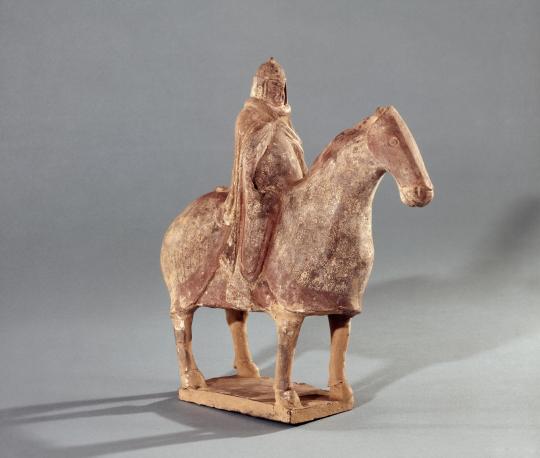
earthenware figure of horse with rider. northern wei dynasty, 386-534.
the british museum only notes that the figure was purchased from private collector george eumorfopoulos; it might have been originally taken from a tomb.
#china#northern and southern dynasties#northern wei dynasty#decorative arts#funereal arts#museum trawling#image source: british museum
2 notes
·
View notes
Text
youtube
Bodhisattva, April 2, 2012
Bodhisattva, probably Avalokiteshvara (Guanyin), Northern Qi dynasty, c. 550-60, Shanxi Province, China, sandstone with pigments, 13-3/4 feet / 419.1 cm high (Metropolitan Museum of Art, New York). Created by Beth Harris and Steven Zucker.
Smarthistory
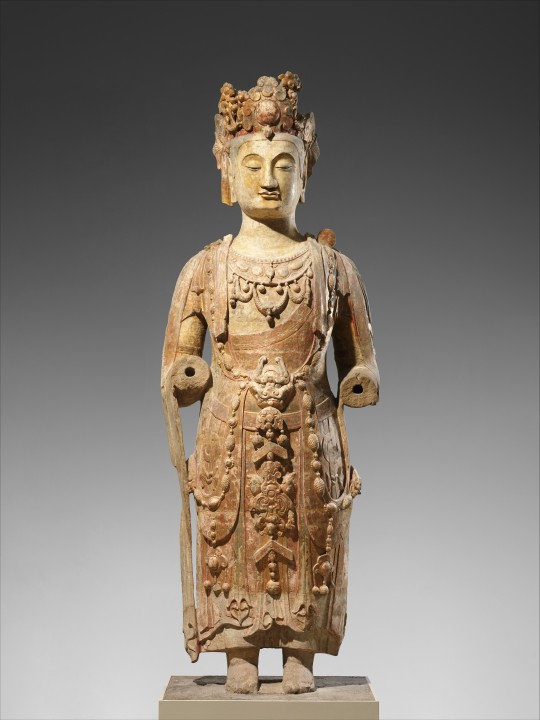
Bodhisattva, probably Avalokiteshvara (Guanyin), ca. 550–560
Northern Qi dynasty, China
Sandstone with pigment
H. 13 ft. 9 in. (419.1 cm); H. with base 14 ft. 9 in. (449.6 cm)
Large-scale sculptures of bodhisattvas wearing extraordinary jewelry epitomize stylistic and iconographic innovations in Chinese sculpture from the second half of the sixth century. The astonishing jeweled harness adorning this bodhisattva is made up of two long strands of pearl-like clusters and multifaceted beads. Some elements, such as the triangular pendants, have Chinese precedents. Others, such as the pearl cabochons, derive from Central Asian traditions. The appearance of such elaborately figural sculptures, which later became standard in Chinese Buddhist art, attests to a growing devotion to Avalokiteshvara in the second half of the sixth century. It is possible that the jewels refer to a passage in the Lotus Sutra in which the historical Buddha Shakyamuni and another bodhisattva extol Avalokiteshvara’s great compassion and presents him with a pearl necklace as a symbol of his benevolence.
Collection of the Metropolitan Museum of Art
#iconography#figure#bodhisattva#Buddhism#avalokitesvara#guanyin#Chinese#sculpture#stone#sandstone#6th century#cultural amalgam#Northern Qi dynasty#Northern Zhou dynasty#northern and southern dynasties#the met#Metropolitan Museum of Art#Youtube
0 notes
Text
In Answer to Advisor Xie by Xie Lingyun
Bidding farewell, departing Pu'er
Unhurriedly returning to Zhou
Yearning wind, emotional move,
missing my fair fields.
Could there be none?
I'm without a companion.
Someone says, peace, tranquility;
soul continuing, form remaining.
答谢谘议
谢灵运〔南北朝〕
告离甫尔
荏冉回周
怀风感迁
思我良畴
岂其无人
莫与好仇
孰曰晏安
神往形留
Came across this while searching for examples of 怀风.
0 notes
Text
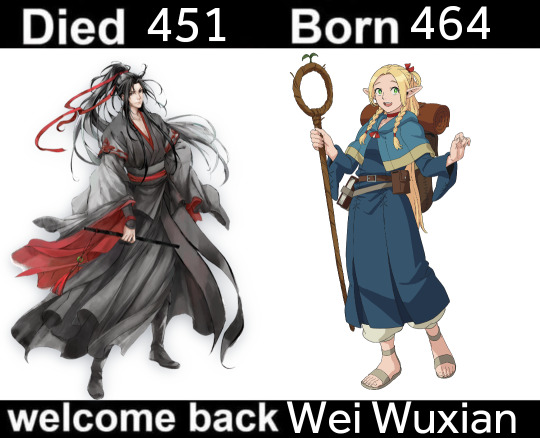
#mdzs#dungeon meshi#wei wuxian#marcille donato#i know mdzs has no specific canonical time period#but mxtx has mentioned her main inspirations were the wei-jin and northern and southern dynasties#so putting wwx's death in 451- 13 years before marcille's birth- isn't much of a stretch#anyway necromancy blorbos go brrrrr
23 notes
·
View notes
Text
I get the sense that most of the time periods I was interested in as a kid are pretty niche which huh
#like my impression of what's popular is like three kingdoms + song dynasty* + qing dynasty + maybe chu-han contention and maaaaybe-#-spring and autumn/warring states?#whereas me it's like early shang + zhou + spring and autumn/warring states broadly but the wu-yue stuff in specific-#+ han dynasty specifically the time from gaozu to emperor wu/emperor zhao +scattered bits of northern and southern dynasties#+ the conflicts wrt jiedushi and eunuchs in late tang#my rambles#it's weird for a lot of these it's been so long I can't really tell you any of the specifics anymore even when I still have a strong-#-association of it with fondness/fascination#I should really reread stuff I've been meaning to for so long I just never have time ackkk
1 note
·
View note
Text
To come to a dialectical conclusion on the clasicide of landlords under Mao Zedong, we must first: (a) understand historical context, (b) understand the popular will during that particular historical moment, (c) understand the material outcomes of the policy, and most importantly, (d) understand the dialectical and materialist foundation, justification, and theory.
Let us fisrt establish the historical context. Classicide ocurred in the late days of the second world war and the infancy of the Peoples Republic. In a roughly 5-7 year span. Predating the communist victory was a 12 year war against Japan, 10+ year civil war (with a break in the middle for the second sino-japanwse war), brief and chaotic rule under the GMD and warlords, followed by the Qing dynasty and beyond. During this time period, the peasantry was the largest and most oppressed class in the country, with minorities such as the Yi and Hui (and most famously, the Tibetan serfs) were entirely enslaved. During thr 1930s, in Shanghai alone, there would be employed body collectors who collected up to 100 dead peasants who had starved or froze to death in the streets. In the rural countryside, landlords held absolute sway over peasants who had to work the land and pay the rent with large proportions of their harvest. Landlords killing peasants for failure to meet quotas or rents was common and unpumished. Landlords raping peasants for rent or not likewise was common and unpunished. Evictions, property seizures, and forfeitures were also exceedingky common and backed by the state. For all intents and purposes, the peasant class was seen as entirely disposable banks of labor and nothing else. The forced selling of children to landlords so a family may survive was also common. The material effect of this millenia old system of oppression is a class full of revolutionary potential and (righteous) justified anger. Fanshen by William Hinton is a good documentary summary of the before and after of a rural peasantry village.
With the communist victory, the CPC put forth a very simple model for reform: assemble a committee of local and communist leaders, take suggestions and proposals from the population which are then put forth to a vote from the population. In many of the northern provinces, where communist bases and reform was more developed than the southern provinces, this process was largely peaceful and orderly. However, in the breadbasket of China, the southern provinces, where landlord control and excesses had been most fierce, the process was not nearly as peaceful. Apprehended landlords, mostly those who continued to try and hold land despite the incoming victory of the communists, were handed to the peasantey based on popular vote and they determined what happened to them. Usually, execution.
The outcome of the purging of the landlords was an egalitarian redistribution of of former landlord holdings to the peasants who actually lived and worked on the land. China at the time had about 500 million people. The landlord class was less than ten percent of the population, holding 70% of all the land. By the end of the land reform campaign, the entire class of landless peasantry was effectively eliminated as landless peasants were now landed.
The materialist and dialectical analysis of the land reform movement is as follows. The landlord class and the peasant class have diametrically opposed interests. The landlords want to maintain as much land as possible while the peasants want as much of the land as possible. There is no compromise solution because inevitably, these diametrically opposed forces will into play and class conflict will begin. If we give each class a 50/50 split, first of all, there would be no peasants to work the landlord's land and in effect, would eliminate the landlord class entirely as this too is a contradiction, but beyond that, the landlords want to get as much land as possible so they will put pressure on the landed peasants to sell or default so they can take it. This is an example of class warfare. Because there exists these antagonistic contradictions, the state exists to mediate class conflict. Before the communist victory, the state was controlled by the bourgeoisie, which included the landlord. This gave them all the power for mediation, allowing them to do whatever they want with no repurcussion, while any protest from peasants are shut down for "violence against property". When the communists put the peasantry in charge of the state, the script was flipped now it was the landlords' turn to eat their own medicine.
Eliminating the bourgeoisie as a class is not a secret communists are trying to hide. It is central to our thesis. By driving out landlords either through reeducation, exile, or killing, the result is rhe same: the destruction of the owning class. The only benefit of the landlord killings (if you want to call it that) is permanently compromising that individual landlord's chance of trying to gain back their power through insurrection, revolt, or other means.
Did excesses happen? Yes. Is killing landlords not ideal? Also, yes. However, we see that the landlord class interest of maintaining as much land as possible comes into conflict. The landlords were willing to rape, murder, enslave, evict, etc. to get more land before communist rule, and they were willing to kill and maim to keep it (hence why there was a civil war!). The contradiction thus could only be solved via violence. Thus, to criticize the landlord class liquidation is equivalent to criticizing the Algerians, or Vietnamese, or African slaves in Haiti and the americas in general as terrorists for fighting back, an opinion which only makes sense if you are not a member of these oppressed groups and classes.
You are, more likely than not, living in a dictatorship of the bourgeoisie. You are, more likely than not, not a member of the bourgeoisie (you work for a wage or salary and don't own things like a company, land, machibery, etc.), but rather a member of the proletariat. However, the ruling class in your country is not your class; it is the bourgeoisie. Therefore, the state has a vested interest in maintaining bouegeoisie rule. To that end, the media, economists, historians, teachers, etc. are groomed and incentivized into upholding bourgeoisie ideology. Thus, the rising of peasants against the bourgeoisie is seen as abhorrent violence, but the mundane violence of eviction, homelessness, starvation, as well as the casual murder, rape, and enslavement of the peasantey is simply seen as the cost of business at best, or entirely ignored or seen as good at worst. Thus, much of the literature on proletariat action is full of lies, exageration, and a focus on the bourgeoisie rather than the average person; the media has a bourgeoise class nature.
Know your class. Know your comrades. Know your class enemies.
340 notes
·
View notes
Text
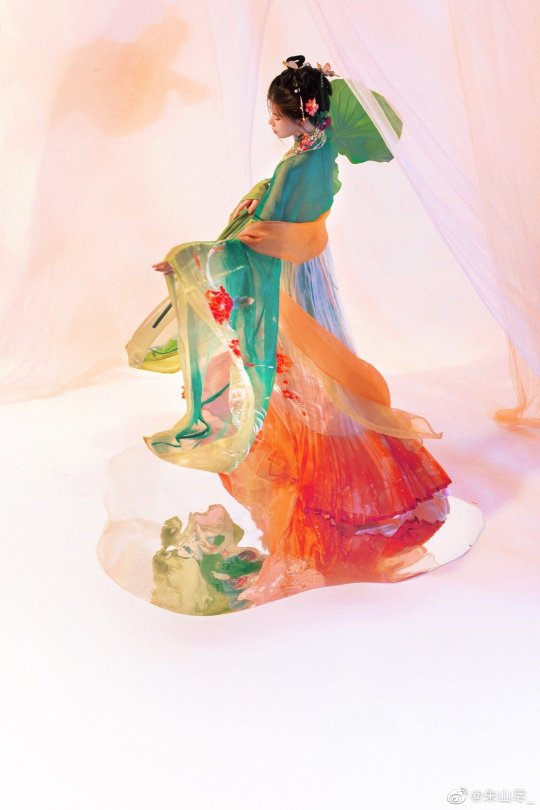
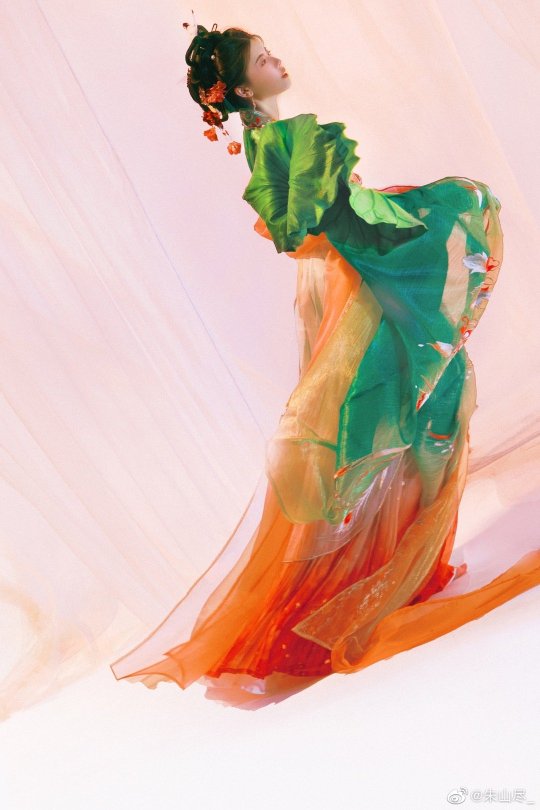
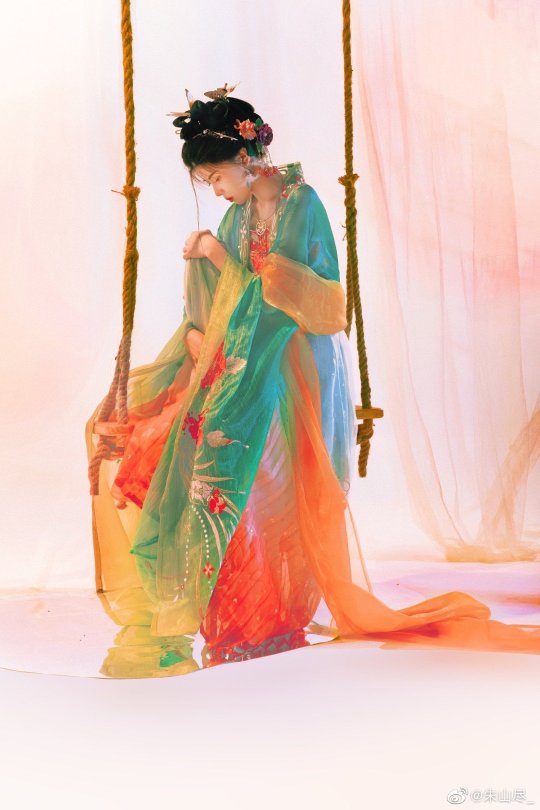

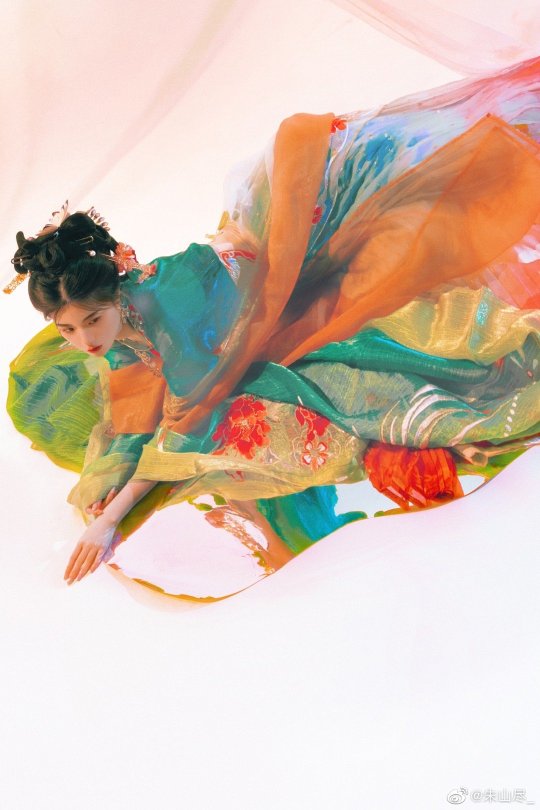

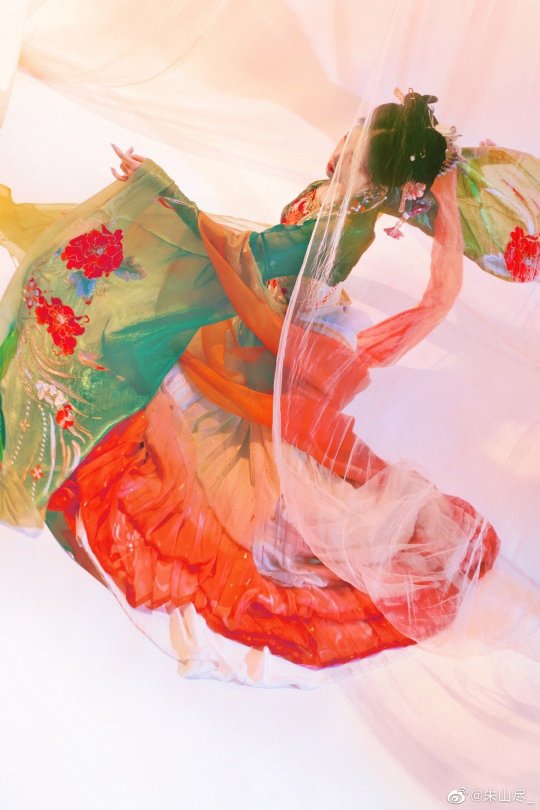
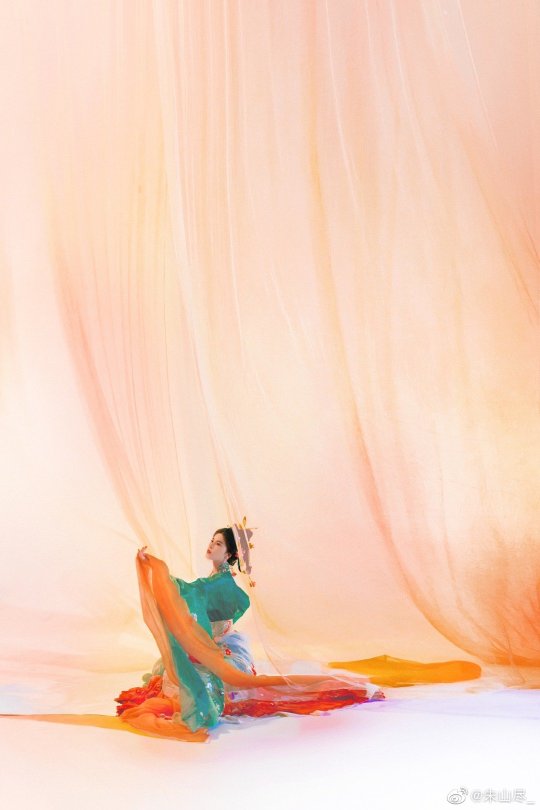
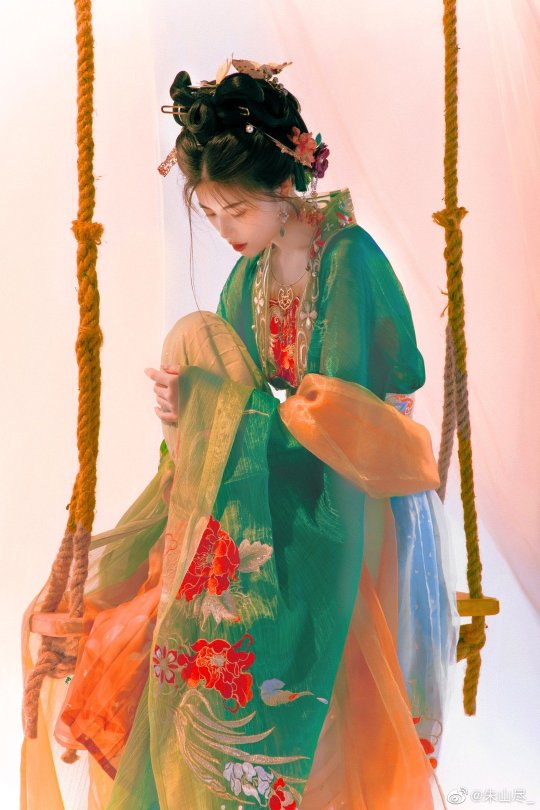
[Hanfu・漢服]Chinese Northern and Southern Dynasties Hanfu Photoshoots
桃花一簇开无主,可爱深红爱浅红?
————————
📸Photo:@朱山尽_
💄Makeup∶ @南夕叙
👗Hanfu:@绛悠堂国风原创
🔗Weibo:
————————
#chinese hanfu#hanfu#hanfu accessories#hanfu_challenge#chinese#china#汉服#漢服#朱山尽#南夕叙#绛悠堂国风原创 #Northern and Southern Dynasties
352 notes
·
View notes
Note
I understood that Fox spirits with gold and white fur are normally heavenly foxes. But Su Daji in the versions we know, killed people before the events of the story. So, will any type of fox spirit get this color when it already has its nine tails? even if they are already foxes that killed people?
I am kinda confused by the wording of this question. Correct me if I'm wrong:
-Heavenly foxes = foxes with gold/white fur and 9 tails
-Heavenly foxes are "good", or at least work for the establishment
-Su Daji of the Pinghua version is a heavenly fox, judging by her appearance
-But she kills people and isn't good
-Does that mean gold/white fur color and 9 tails is merely a signifier of power in fox spirits, and has nothing to do with their alignment or allegiance?
Well...time to dive into some fox spirit lore.
In the oldest Chinese legends, nine-tailed foxes are very much divine beasts. The Girl of Tushan, for example. Nine-tailed foxes also appeared in Han dynasty grave reliefs and paintings as part of Queen Mother of the West's worship:

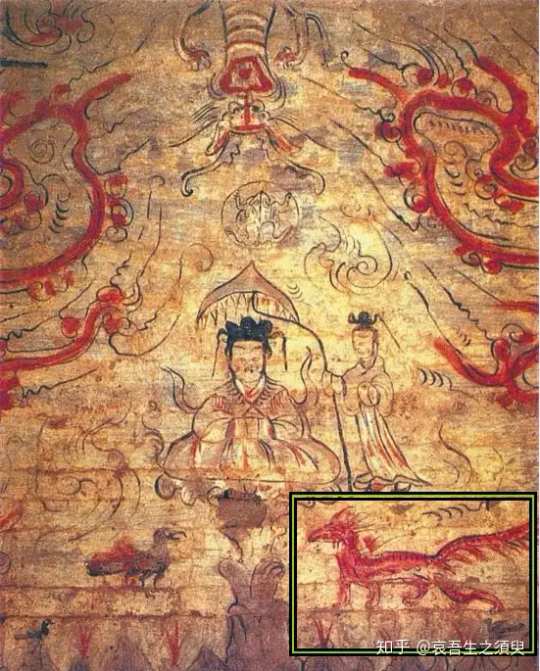
They were very much auspicious beasts, like Qilins or Phoenixs. Same goes for white foxes.
The exact point in time where "Auspicious Foxes" started shifting into "Demonic Foxes" is unclear, but it probably had something to do with the change in ways people conceive of yaoguais: namely, the idea that anything that grow old enough can become a yaoguai.
Foxes seemed like a prime candidate for that kind of stuff, because unlike dragons or phoenixs, they were just too common, mundane, and eerie. Divine beasts don't sneak into your chicken coop under the cover of darkness.
By the Northern and Southern dynasty, in Ge Hong's Baopuzi, there was already the idea that animals that reached a certain age could transform into humans, and he cited foxes, wolves and jackals as an example:
"...They can live up to 800 years old, and when they reached 500 years old, these beasts transform into human shapes."
Around the same time period, Guo Pu's Xuanzhong Ji gave an even more elaborate account of fox spirits' transformation:
"Upon reaching 50 years of age, foxes can transform into women. 100 years, beautiful women, divine shaman, or men in order to charm women. They can know things from thousands of miles away, are masters of the arts of charms, able to make people lose their minds...at 1000 years old, they can commune with Heaven, and are known as heavenly foxes."
This concept of heavenly foxes had a renaissance in the Tang dynasty, where folk worship of foxes were very popular, and Daoist influences meant that many foxes in Tang folklore were practitioners of the Daoist arts.
If foxes could cultivate, it was only natural that the best cultivators among them could become immortals, just like human Daoists, and get a job in the Celestial Bureaucracy.
Curiously enough, all Tang dynasty heavenly foxes were male foxes, and the troubles they got into often stemmed from their own lust and entitlement to human women.
Heavenly fox status also offered them protection from death sentences: when they were subdued by Daoist masters or immortals, the punishments were either beating with a rod or exile.
However, only one Tang text connected heavenly foxes with nine-tailed foxes and a specific fur color: You Yang Za Zu, which I cited in a previous answer.
In a sense, this fusion of nine-tailed foxes with heavenly foxes was really going back to the roots of "Nine-tailed Foxes as Auspicious Beasts".
But it didn't last, and by the Song dynasty, nine-tailed foxes had undergone full yaoguai-fication like the rest of their kind.
This is just my speculation, but "Nine-tailed Foxes as Demonic Spirits" could perhaps be traced back as far as their more auspicious associations: the nine-tailed foxes of the Book of Mountains and Seas were just another type of man-eating fantastic beasts, after all.
Anyways, it is at this point that the idea of Daji being a nine-tailed fox first appeared, and FSYY Pinghua went a step further by merging Daji with the "heavenly nine-tailed fox" of You Yang Za Zu, turning the auspicious divine beast back into the demonic.
But, back to your question: a white/golden fox, or a nine-tailed fox, is not necessarily a heavenly fox. In the Qin-Han era, that's just an auspicious beast.
By Guo Pu's definition, a heavenly fox is just an incredibly powerful 1000 years old fox. By the Tang dynasty definition, a heavenly fox is a long-lived master of the Daoist arts who managed to get a job in the Celestial Bureaucracy.
They absolutely can be assholes (though shielded from the worst punishment). The idea that a heavenly fox is also a nine-tailed fox of unusual fur color is specific to that one passage in You Yang Za Zu and FSYY Pinghua.
Having nine tails/white or golden fur doesn't say anything about a fox's alignment or morality either. Rather, it says more about people's general conception of foxes during that specific era, and what was auspicious in one dynasty could easily become markers of the demonic in another.
#fengshen yanyi#investiture of the gods#chinese mythology#chinese folklore#su daji#huli jing#fox spirit#nine tailed fox
204 notes
·
View notes
Photo
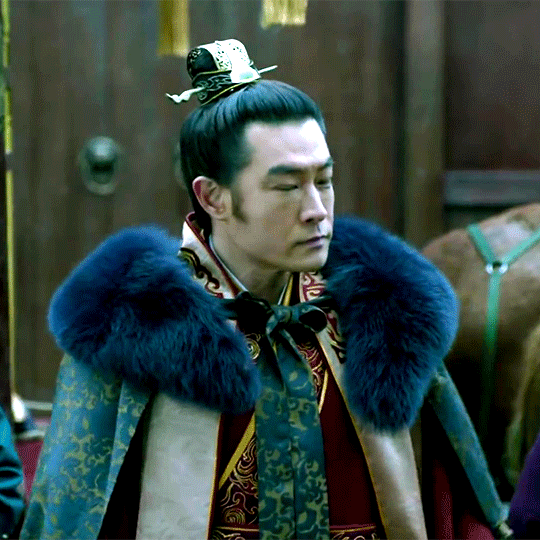

nirvana in fire | prince yu
#nirvana in fire#perioddramaedit#cdrama#cdramanet#cdramagifs#cdramaedit#琅琊榜#gzh#northern and southern dynasties#gifshistorical#costumesource#asiandramanet#perioddramasource#onlyperioddramas#chinese drama
75 notes
·
View notes
Text
Dead languages and maybe Wei Ying is long-lost royalty
Today I had a discussion with @pakhnokh regarding why Wei Wuxian didn’t know the deeper layer of meaning behind the Lan forehead band. It was a long discussion on Twitter, so I figured I should just make a post here and leave this information out for anyone who might find it useful.
To start off: The reason why Wei Ying didn't know the deeper layer of meaning of the Lan forehead band was in the book. But it was written in a very opaque way, in one single throw-away line. In the book, when Wei Ying had to copy the Lan rules, he specifically complained that the rules were written in seal script.
The Useless Ye Olde’ Script
Seal script is a script that predated traditional Mandarin. It was infamous for being needlessly complex and having dozens, if not hundreds different dialects and writing methods. Some forms of seal script were entirely different languages altogether. When Qin Shi Huang united ancient China, he burned a lot of books and forced people to adopt a standard way to write, thus cementing traditional Mandarin as a singular language that is still used today, 2000 years after. A way to visualize how complex seal script was, is that there were 22 different ways to write the word 'sword'.

That is how mind-bogglingly complex it was. And worse, it was the source of much conflict in ancient times. To explain it simply, it was supposed to be one language. But if people could not even agree on how to write the same word, then how could they agree on more important things and cease warring against each other?
Language standardization was one of Qin Shi Huang’s greatest achievements, if not the greatest, as it laid the foundation for more peace and eventual unification in later dynasties.
This topic was made into an Academy Award-nominated movie, Hero by Zhang Yimou in 2002.

(the word ‘sword’ that Qin Shi Huang decided on, thus wiping out the other 20+ ways to write the same word)
Dating Mo Dao Zu Shi in real history (or, Wei Ying might actually be long-lost royalty)
In a very interesting turn of events, MXTX has confirmed in her latest interview in Subaru magazine, that the events of MDZS happened during Wei Jin, Southern and Northern Dynasties (commonly referred to as the Six Dynasties era by English-speaking historians, even though these two don’t perfectly line up).
Yes, the same Wei 魏 in Wei Ying 魏婴, Wei Wuxian 魏无羡.
So the events in MDZS took place in the era immediately after the fall of the Qin dynasty (caused by Qin Shi Huang’s death and his sons not being able to measure up). Therefore, Wei Ying’s generation is in a time after the language has standardized into a single form.
The Lan rules, at least the first set and the meaning of the forehead band, were written about 500 years before Wei Ying’s generation, at the founding of House Lan. So that would put it squarely in the pre-Qin, pre-lingual-standardization era.
So by Wei Ying’s time, the Lan rules were essentially written in a dead, kinda useless, and very very hard-to-read-because-it-has-some-hundred-different-dialect language.
That’s on top of the fact that it was probably written in the highest level of 书面语 shumianyu (written language) possible. I.e. extremely condensed and truncated (with zero punctuation).
So the Lan rules are more or less a very thick law book of a different nation written in the strictest, most condensed dead language that is in no way, shape, or form still in practical use for Wei Ying (and most other people not Lan). Do you feel like reading it? I don’t.
And that is why Wei Ying never figured out the original meaning of the forehead band despite having copied the rules hundreds of times (first day in class, he was already punished and sentenced to copying the rules 100 times by Lan Qiren).
Because he was just copying the words without really reading them. This was mentioned when Wei Ying asked Lan Wangji the meaning of the Lan forehead band, and Lan Wangji replied with, you have copied the rules so many times and you still don’t know?
But isn’t Wei Ying really well-read and smart, and what about the Wen book?
1/ Wei Ying is smart and well-read. There was one throw-away line in the book that mentioned his having read all the books available to him in Lotus Pier, and that he had read all kinds of trivia (including the Thousand Sores and Hundred Holes curse that got put on Jin Zixun). But it was also stated that he favored practical things or things that interested him. Lan rules in dead, extremely hard to read language are… well… yeah…
There was never any mention in canon where he remembered specific Lan rules unless it was literally beaten into him by teenage Lan Wangji.
2/ In the novel, the Lan rules are singled out as the only materials written in seal script. The Wen books were standard issued to everyone who took part in the Wen education camp. So the chance that it was written in seal script is low to none.
Wei Ying is not the only person who doesn’t know the meaning of the Lan forehead band
Jiang Cheng didn't know either. Jin Ling didn't know either. During the Wen archery competition, when Wei Ying pulled off Lan Wangji's forehead band, he did ask Jiang Cheng what the hell was that, when Lan Wangji and other Lan members reacted like he did something shameful. Jiang Cheng replied with, how the hell would I know? Their house has so many rules. Just stop poking them.
Jin Ling didn't know until the other Lan teenagers told him. The only characters who know this in canon are all members of Lan house. The impression that Wei Ying is the only one who doesn't know is 100 percent fanon. Keep in mind both Jiang Cheng and Jin Ling are clan heirs, so their education and knowledge of other houses absolutely are not low.
In fact, the novel specifically shows that.....the rest of the cultivation world is not that clear on the actual specifics of Lan rules either. This is shown when Jin Zixun pressured Lan Xichen and Lan Wangji into drinking wine, a clear violation of Lan rules, and the rest of the cultivators in the banquet cheered him on.
These cultivators were also heads of Houses or very high-ranking members. Many of them would have studied in Cloud Recess. So again, people who have high education… still know shit all about the actual specifics of Lan rules beyond a vague, general monk-like impression.
About the only other person aside from Wei Ying (and Lan members) who knew the specific rule that Lans do not drink in that banquet was Jin Guangyao, a character whose trademark is high intelligence and extreme social savvy (plus having roomed with Lan Xichen and taken care of him for unknown amount of time right before the Sunshot campaign)
Are there secret parts of the Lan rules?
No. The Lan rules are public. The book is very clear on this. All Lan rules are carved into a massive stone placed at the foot of the mountain where Cloud Recess is, where anyone passing through or coming into House Lan can see it.
This rule stone was first mentioned when Lan Wangji and Wei Wuxian met for the first time. Wei Ying complained that he didn’t know the rules and why are there so many things forbidden in the Lan rules? Lan Wangji replied with, rules are written on the stone. Go read it yourself.
The second time it was mentioned in the book, was Lan Qiren’s first class. The first thing he did was complained that even with the stone and rules being in open space, nobody bothered to read. So he will read the rules now.
The book mentioned at least two different sets of Lan rules that both need to be obeyed: 礼则篇 Lize Pian (Book of Rites) 上义篇 Shang Yi Pian (Book of Justice). Whether the rules are separated further into more sets or not is unknown.
Why are some Lan rules better known than others?
Because Lan rules are based on 克己復禮 Keji Fuli, a real-life Confucius asceticism that calls for the restraint/purge of one’s ego and to return to the core rites. This is also newly confirmed in MXTX’s new interview, though it has been more or less heavily suggested in the book itself, with House Lan being known as the House of Gentlemen.
Gentlemen here is not the Western ideal of Gentlemen, but rather a Confucius ideal and set of values. Confucius is the person who created this ideal in the first place.
So it’s not that some rules are better known, but rather the entire image of Lan House is a huge pointer as to how they live their life: with great restraint.
648 notes
·
View notes
Text
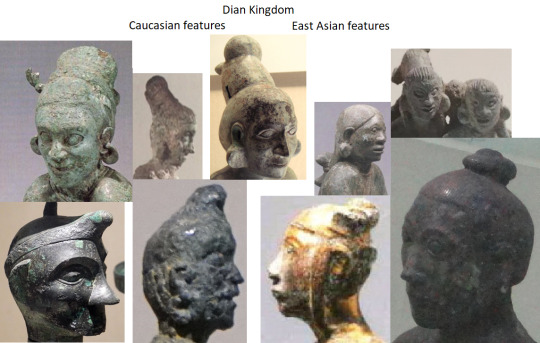

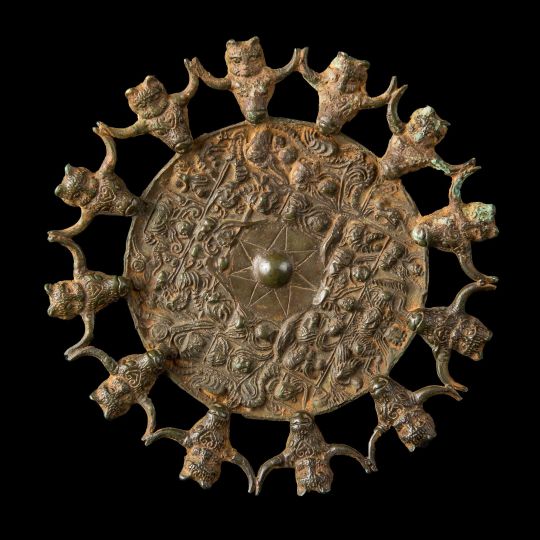
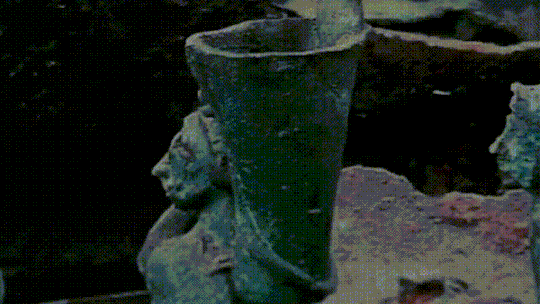

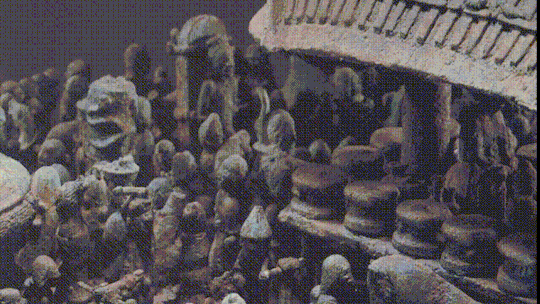

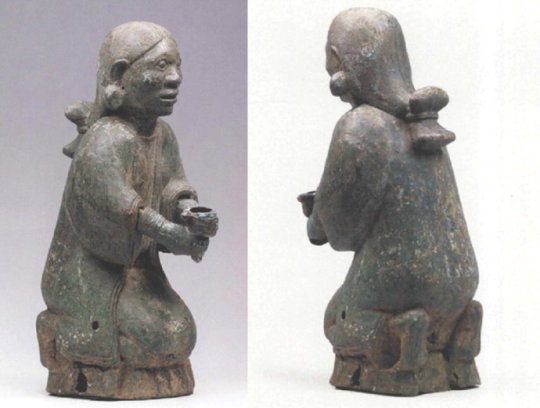

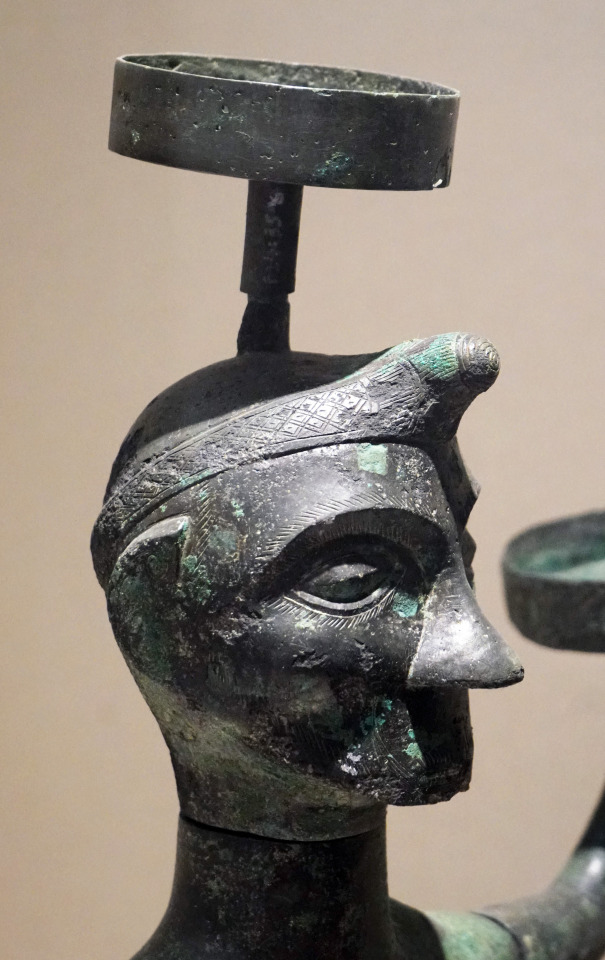

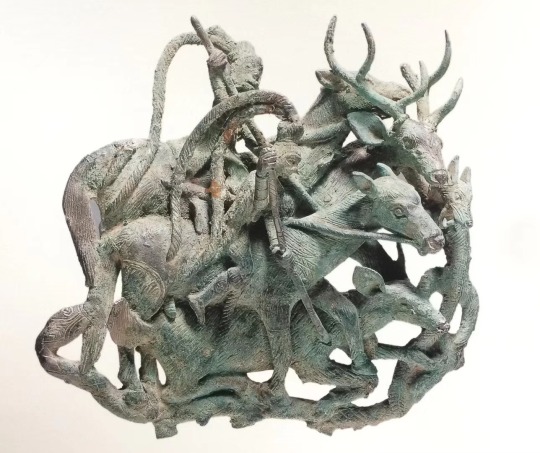





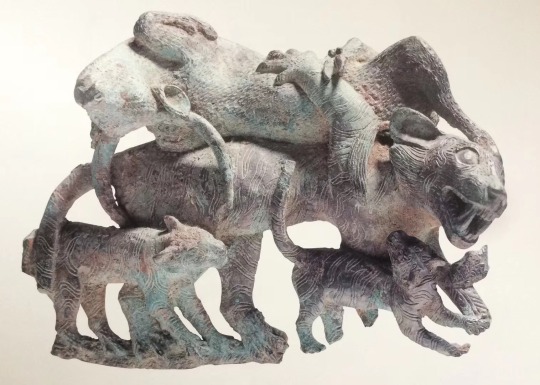

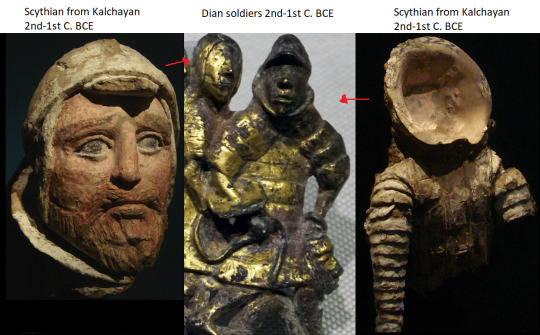
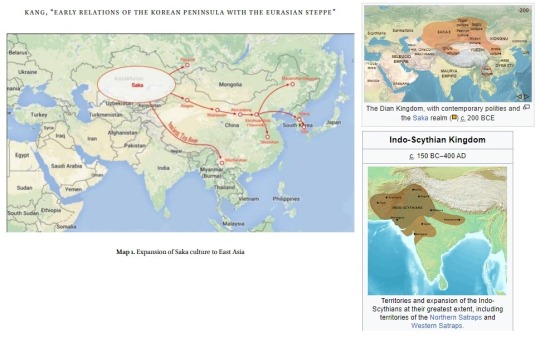


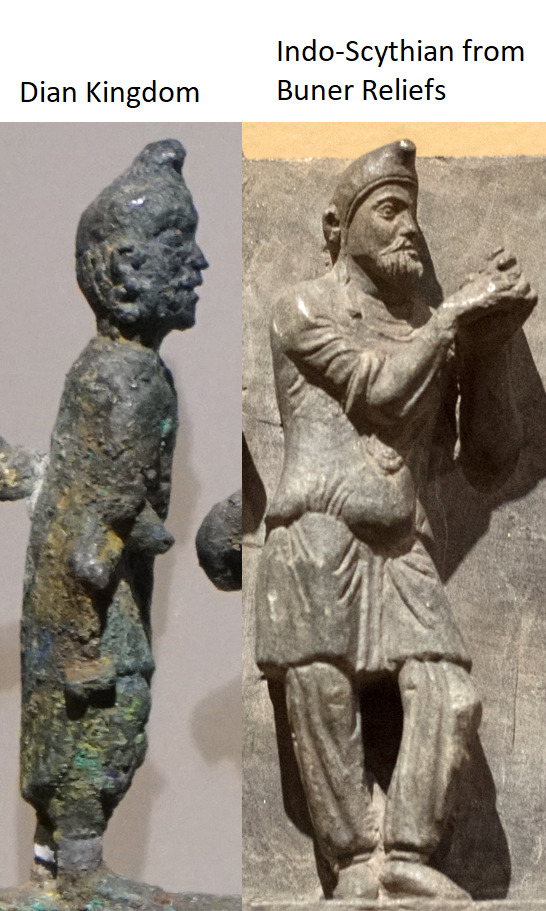


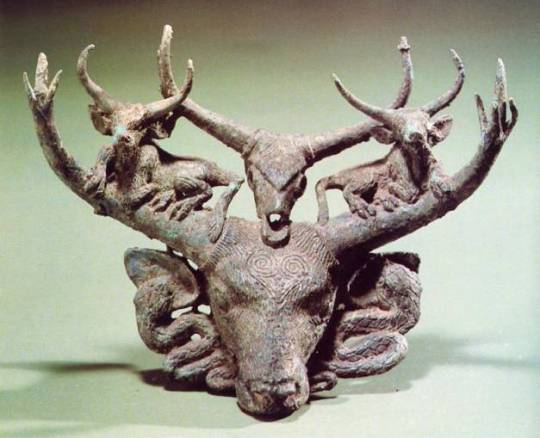
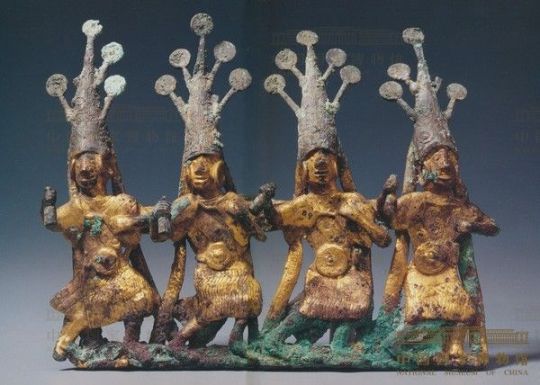

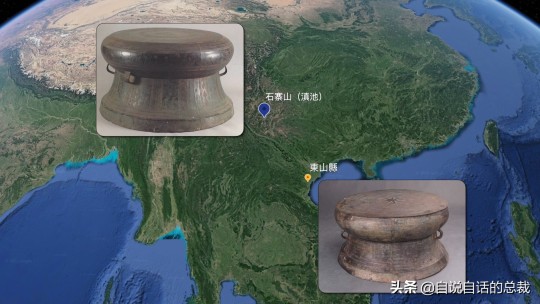
Dian Kingdom 8th-1st C. BCE. Meant to post this one a long time ago but it took me forever to put together. I'm just going to post 30 images here, I got about 100 total on my blog. Link at bottom.
The Dian Kingdom was an advanced civilization in what is modern-day southwest China. It was occupied by the Han Dynasty and incorporated into China after that. From what I've gathered, the people of the Dian Kingdom were probably closely related to the Baiyue people from southern China and northern Vietnam. Wikipedia says they may have spoke a Tibeto-Burman language. I found it interesting that some of these people look Caucasoid though and were wearing clothing similar to Scythians. The image I compared of the Dian man to the Indo-Scythian has a similar facial structure, hat, and even the same type of pants (sorry, I don't have time to tidy up the comparison photos more).
The Dian art theme of the four tigers attacking an ox is found in the same pre-Han period among the Xiongnu at Aluchaideng, and a similar motif appears at Tillya Tepe a couple centuries later. The theme is the same but the style is very different, still it indicates a connection to these places of the world through trade and exposure.
Some of the scenes with soldiers show a variety of different equipment styles and certain subjects have distinct fashion styles (like the people wearing the items that make their ears look huge). I watched a couple documentaries on genetics of the Dian and they were only able to find genetic info for one person, who was identified as similar to the Baiyue people. I'll link those youtube videos in sources below. I assume these people were primarily related to modern day Vietnamese and southern Chinese (or other people nearby) but may have had close interactions with (and even immigrants from) Scythian cultures despite their distance from them, which is interesting.
From the videos: "According to the final count, the amount of bronze ware excavated from Lijia Mountain is almost half the amount of the Shang Dynasty bronze ware excavated in Yinxu, Henan."
youtube
youtube
#ancient history#history#museums#art history#art#sculpture#statue#ancient china#china#vietnam#scythian#artifacts#antiquities#anthropology#archaeology#indo european#Youtube
272 notes
·
View notes